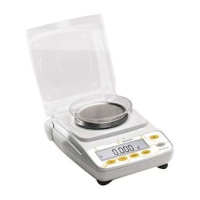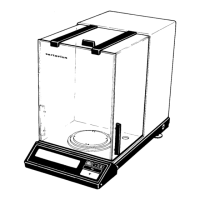8. Calibration and Adjustment
Background During calibration, a calibration weight is used to determine how much the displayed
value deviates from the actual measurement value. This deviation is compared against
a preset target value. The subsequent adjustment corrects this deviation or reduces
the permissible error limits.
In Secura
®
, Quintix
®
and Practum
®
balances, calibration and adjustment are combined
as one process. The balance is automatically adjusted after each calibration.
Before using a verified balance for legal metrology, calibration/adjustment
must always be carried out at the balance setup location. This can be performed
automatically or manually, or for Practum
®
models of accuracy class k using an
external weight.
When and How Often To achieve the highest accuracy possible, regularly calibrate and adjust the balance:
– daily after switching on the balance,
– each time the balance is leveled,
– each time ambient conditions have changed (temperature, humidity, or air
pressure),
– each time the balance is set up at a new location or moved in its current location.
The following describes in detail the available options for calibrating and adjusting
the balance:
– Calibration/adjustment using an internal calibration weight (Secura
®
and Quintix
®
only)
– Calibration/adjustment using an external calibration weight
(see “Calibration/Adjustment Using an External Calibration Weight” on
page 75)
– Automatic calibration/adjustment with isoCAL
